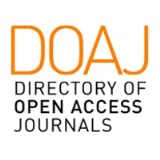Life of Writing (and III). Writing and Needs
DOI:
https://doi.org/10.58265/pulso.4902Abstract
This article examines all the variables that impact the instruction and acquisition of reading and writing skills for children with special educational needs, including developmental, physical, psychological, neurological, social, and pedagogical factors. It presents an overview of the different competencies implicated in the language processing system for reading and writing, such as auditory and visual analysis, lexical and semantic processing, and motor skills involved in reproducing or transcribing letters and words. We compare the divergent pathways of the decoding (reading) and encoding (writing) processes, as well as the progression toward speech or writing, and the procedures involved in dictation and copying.
Downloads
References
CARLINO P. y SANTANA D. (1996): Leer y escribir con sentido. Madrid: Visor.
CUETOS, F. (1990): Psicología de la lectura: Diagnóstico y tratamiento. Madrid: Escuela Española.
CUETOS, F (1998): Evaluación y rehabilitación de las afasias. Madrid: Panamericana.
DÍEZ VEGAS, C. y PARDO DE LEÓN, P. (2000): Curso de experto Universitario en Lenguaje Escrito en Educación Infantil: Estrategias de trabajo en grupo. Madrid: UNED.
FUNNELL, Elaine. ( 1995): Learnig toread. Blackwell Publishers.
GARCÍA VELÁZQUEZ, A. (200 1 ): La vida de la escritura l. Pulso, n° 2 4, 27-46.
GARCÍA VELÁZQUEZ, A. (2002): La vida de la escritura l. Pulso, n° 25.
GARCÍA VELÁZQUEZ, A. (2003): Proyecto de investigación: Hoy quiero escribirte. (Inédito).
GOODMAN, Y.M. y GOODMAN, K. S. (1990): vygotsky in a whole-languaje perspective. En L.c. Moll (Ed.) Vygotsky and education. Canmbridge: Canmbridge University Press.
LACASA, P., ANULA, J. y MARTÍN, B. (1995): Leer y escribir con sentido: ¿Cómo lograrlo desde la perspectiva del lenguaje integrado? Comunicación, Lenguaje y Educación, 25, (págs 31-49).
LEBRERO BAENA, M• P. y LEBRERO BAENA, M" T. ( 1991 ): Cómo y cuando enseñar a leer y escribir. Madrid: Síntesis.
MARTÍN, B. ( 1995): Lenguaje integrado, sus creencias sobre la alfabetización. Comunicación, Lenguaje y Educación, 25, (págs 21-29).
MARUNY C. L., MINISTRAL M. M. y MIRALLES T. M. ( 1997): Escribir y leer. Zaragoza: Edelvives.
MATA, SALVADOR. (1997): Dificultades en el aprendizaje de la expresión escrita: Una perspectiva didáctica. Málaga: Aljibe.
OLSON, D. (1994): The word on paper. Cambridge: Cambridge University Press.
RÍUS, M. (1982): Planificación de objetivos para la maduración de/lenguaje. Madrid: Seco-Olea.
SOLÉ, 1 (1991): ¿Se puede enseñar lo que se ha de escribir? Cuadernos de Pedagogía 188, 33-35.
TEBEROSKY (1992): Aprendiendo a escribir. Barcelona: Horsori.
TOLCHINSKY, L (1993): Aprendizaje del lenguaje escrito: procesos evolutivos e implicaciones didácticas. Barcelona: Anthropos.
WOOD, D.J.; BRUNER, J. y ROSS,G (1976): The role oftutoring in problem solving. Journal of chid Psychology and Psychiatry, 19, 89-100.
Downloads
Published
How to Cite
Issue
Section
License
Copyright (c) 2022 Pulso. Revista de educación

This work is licensed under a Creative Commons Attribution-NonCommercial-NoDerivatives 3.0 Unported License.
This journal offers immediate open access to its content based on the idea that offering readers free access to research favours a global exchange of knowledge.
Papers are published in the electronic version of the journal under a Creative Commons License: Attribution-NonCommercial-No derivatives 4.0 International
Authors are allowed and encouraged to promote the post-print version (reviewed and accepted for publication version) of their work online before publishing them. This favours their earlier circulation and dissemination and thus a possible increase in their citation and reach among the academic community.













